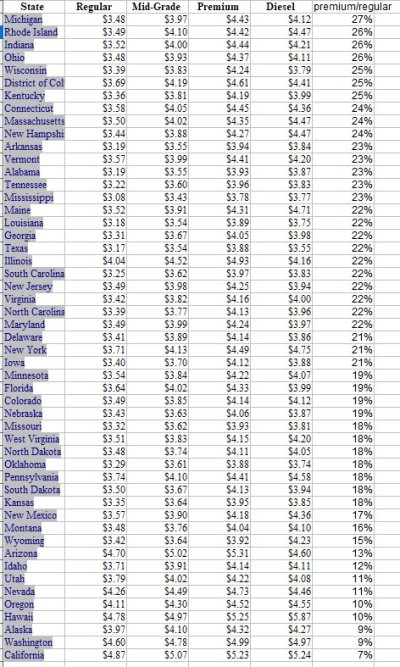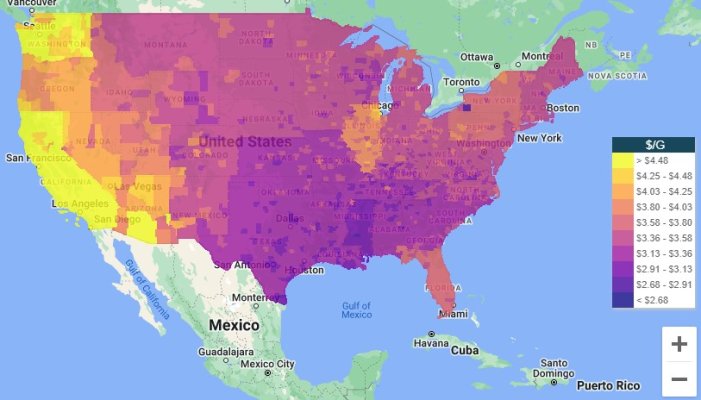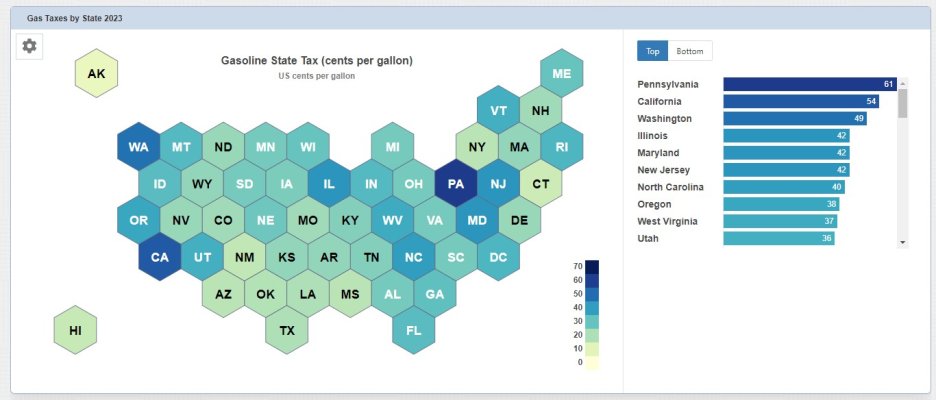38Chevy454
Thinks s/he gets paid by the post
Curious what the gasoline price spread is in your area between regular and premium? Around Cincinnati the spread has increased to a full $1.00/gal between regular (87 octane) and premium (93 octane). The mid grade (89 octane) is usually right between at $.50/gal more than regular.
I just can't believe the price spread and how it has increased over the years. Used to be around $.20-.30/gal increase for premium over regular. Then it became $.50, then $.70, to the point it is now $1.00!! I know it is not that increase due to material cost, I believe it is just profit increase for the most part. I just filled regular today at Costco for $3.12 and premium was $4.12. That $1.00 is common at other gas stations as well. Premium is basically a 30% higher price. Good thing I only need premium for one of my old cars.
So what's the price spread where you are?
I just can't believe the price spread and how it has increased over the years. Used to be around $.20-.30/gal increase for premium over regular. Then it became $.50, then $.70, to the point it is now $1.00!! I know it is not that increase due to material cost, I believe it is just profit increase for the most part. I just filled regular today at Costco for $3.12 and premium was $4.12. That $1.00 is common at other gas stations as well. Premium is basically a 30% higher price. Good thing I only need premium for one of my old cars.
So what's the price spread where you are?



